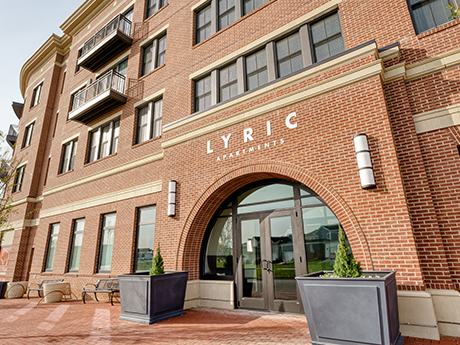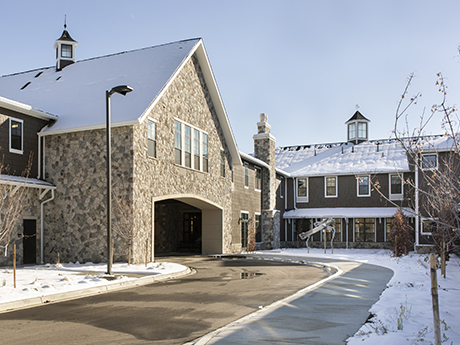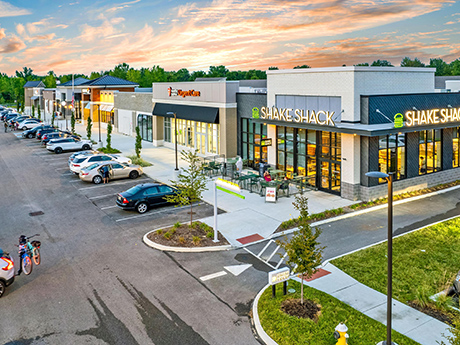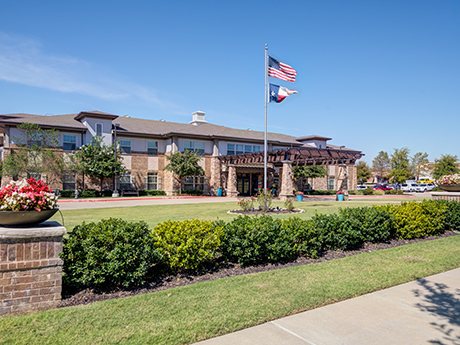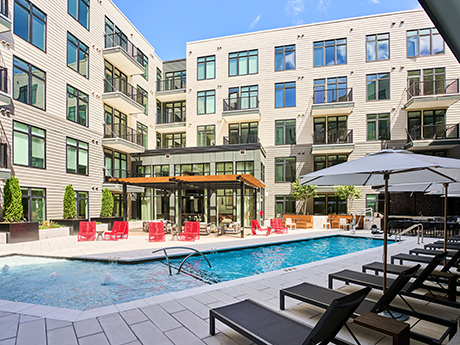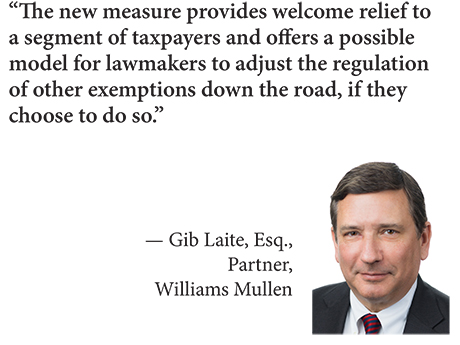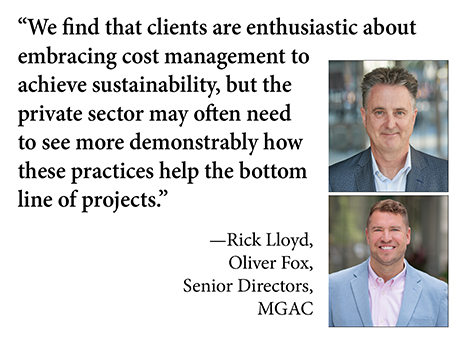Lee & Associates’ 2025 Q3 North America Market Report examines a commercial real estate landscape experiencing some pauses as the effects of exogenous forces work their way through the market. Economic and legal questions, the second- and third-order effects of tariffs, persistently high costs, unemployment concerns and the new realities of artificial intelligence (AI) have combined to produce mixed results across all property types. Demand for office and retail has increased (and their respective pipelines remain constrained). Of the four property types covered in the report — industrial, office, retail and multifamily — only retail saw transaction momentum in the previous quarter. Meanwhile, the overbuilt industrial and multifamily sectors have witnessed weakening or negative demand in the third quarter. Lee & Associates’ full, detailed market report is available to read here. The overviews for the sectors below reveal a market that seems to be holding its breath, awaiting new information. Industrial Overview: Markets Await Tariff Clarity Net absorption of industrial space increased in the third quarter across North America, but demand was weak and failed again to keep pace with the supply of new buildings, while tenant growth remained hobbled by tariff concerns and interest rates. In the United States, following 8.1 million square feet …
Features
AcquisitionsContent PartnerDevelopmentFeaturesIndustrialLeasing ActivityLee & AssociatesMidwestMixed-UseMultifamilyNortheastOfficeRetailSoutheastTexasWestern
By Louis Rogers of Capital Square Navigating the complex tax rules of a Section 1031 exchange can be a complicated experience. For many, investing in a Delaware Statutory Trust, or DST replacement property, simplifies and streamlines the process so that more investors can enjoy the benefits of Section 1031. Introduction to Section 1031 Exchanges Section 1031 of the Internal Revenue Code, commonly referred to as a “tax-deferred exchange,” provides for the complete deferral of federal and state taxes on the sale of investment real estate. The seller must reinvest the net sale proceeds into a qualifying replacement property, which can be any type of real property. The gain that would have been recognized in a taxable sale is deferred until the replacement property is sold in a taxable transaction. Section 1031 has been in the tax code since 1921. Historically, most exchangers have acquired a “whole” property, meaning they acquired an entire replacement property. However, starting in 2002, many exchangers have acquired a fractionalized interest in their replacement property, first using the Tenant in Common (TIC) structure and, more recently, the DST structure. Instead of acquiring a whole property, they acquire a fractionalized interest or a percentage of a replacement …
By Hayden Spiess Seniors housing industry players have contended with their fair share of challenges over the past couple of years, along with the commercial real estate sector on the whole. Elevated interest rates have continued to complicate investment activity, and increasing costs have impacted all aspects of the senior living landscape, especially development. Given the robust demographics driving the industry though, some of these same challenges have helped fuel its recovery. For instance, depressed levels of development activity are driving down vacancy and generating interest in existing senior living properties. Brokers active in the seniors housing subsector have observed a strong revival of transaction volume and are optimistic for the coming years. Nine of these brokers weighed in and shared their perspective on today’s landscape. Participants included Allison Irwin, vice president, mergers & acquisitions at Evans Senior Investments; Cindy Hazard, president of JCH Senior Housing Investment Brokerage; Dave Fasano, managing director at Berkadia Seniors Housing & Healthcare; Josh Jandris, vice chair and co-head, national seniors housing capital markets at Cushman & Wakefield; Jay Jordan, co-founder of Continuum Advisors; Rob Reis, senior managing director of investments and director of senior housing at Marcus & Millichap; Ryan Saul, senior managing director of …
In JLL’s second-quarter “Retail Market Dynamics” report, “resilience” was the word used to describe the national retail investment landscape in the first half of 2025. Transaction volume reached $28.5 billion, a 23 percent increase over the same period a year ago. The figure also outpaces the long-term historical average of $27.7 billion for the first two quarters of the year, according to the brokerage firm. The scope of data includes all transactions $5 million and above for all retail asset subtypes. Retail investment sales brokers say there is plenty of capital flowing into the sector and more robust competition from institutional investors as of late. “We are seeing enhanced liquidity in the retail investment sales market from both an equity and debt perspective,” says Michael Neider, senior director with JLL Capital Markets in Chicago. “Total transaction volume is up in terms of deal volume and number of transactions, while cap rates are compressing.” Grocery-anchored and unanchored retail assets remain the most efficiently priced, but power center cap rates are compressing at a faster pace from their elevated levels, says Neider. “The spread between grocery-anchored cap rates and power center cap rates has narrowed from 166 basis points in 2023 — …
When Stealers Wheel lamented being “stuck in the middle with you” in their 1972 song of the same name, they were assuredly not intending to sing from the perspective of a senior searching for a place of residence. Nevertheless, the lyric could today very aptly be applied to the predicament that many potential seniors housing residents face. According to the National Investment Center for Seniors Housing & Care (NIC), the number of middle-income seniors in the United States is projected to almost double by 2029, totaling roughly 14 million seniors. NIC also purports that more than half of these individuals will not have the financial means to pay for seniors housing out of pocket. NIC defines middle-income seniors as those with $25,001 to $74,298 in annual income and assets in its executive summary on the topic of the “forgotten middle,” which was published in 2019. At the same time, many of these same seniors do not qualify for residence in affordable housing units. “These are older adults — lots of older adults — who don’t qualify for affordable housing but also can’t afford the cost of many private-pay options,” explains John Cochrane, president and CEO of HumanGood, a nonprofit …
DURHAM, N.C. — ZOM Living, in partnership with AEW Capital Management, has delivered Maizon Durham, a 248-unit luxury apartment community located at 500 E. Main St. near the historic American Tobacco Campus in Durham. The project team included architecture firm Hord Coplan Macht and interior designer One Line Design. Maizon Durham offers one-, two- and three-bedroom floorplans ranging in size from 558 to 1,450 square feet. Amenities include a swimming pool with a sundeck and lounge seating and a fitness center with a dedicated recovery room and spin studio. Additional community spaces include a pet spa, coworking areas, conference rooms, private offices, quiet zones, a resident café and a 24-hour marketplace, as well as 13,000 square feet of street-level retail space.
By David Weissman, managing director, Greek Real Estate Partners The industrial logistics landscape is undergoing a dramatic transformation as property owners and tenants invest in artificial intelligence (AI) tools to make each square foot more innovative, more resilient and more responsive. In doing so, these landlords and users are setting a new industry standard for efficiency and adaptability. Over the past few years, the industry has transitioned from pilots and proofs-of-concept to measurable returns, particularly in property management and facility operations. Companies that are using AI to redesign logistics flows have seen an approximately 15 percent boost in operational efficiency and a nearly 10 percent reduction in total logistics costs, benefits that compound significantly across large-scale portfolios. That’s according to 2025 data from AI In The Chain, a platform that tracks progress and ramifications of the technology’s integration in to supply chain operations. At the same time, data from Worldmetrics shows that warehouse operators who are implementing AI solutions have seen reductions in order-picking errors of up to 50 percent. In addition, AI solutions have reduced inventory processing time by approximately 40 percent, per Worldmetrics. Not surprisingly, tenants are seeking smarter buildings. CBRE’s U.S. Real Estate Market Outlook 2025 reveals …
By Gib Laite, Esq. of Williams Mullen North Carolina has little sympathy for taxpayers that miss filing deadlines, but a new law eases the potential repercussions for property owners otherwise qualifying for religion-based tax exemptions. Under the new measure, taxpayers can apply for the religious exemption from property taxes going back five years from the law’s adoption date earlier this year. It will be interesting to see whether the General Assembly extends a similar grace period to other exemptions over time. Regardless, the new measure provides welcome relief to a segment of taxpayers and offers a possible model for lawmakers to adjust the regulation of other exemptions down the road, if they choose to do so. And for all taxpayers, the recent change provides a good opportunity to review how North Carolina grants and regulates property tax exemptions. Machinery of Taxation As a rule, North Carolina subjects all real and personal property to property tax unless the General Assembly or the state constitution exempts the property, or it falls into a special class of exempted property. Most exemptions are set out in the Machinery Act, a framework of tax rules within the North Carolina General Statutes. The Machinery Act allows …
By Eric Taub When Bluetooth burst on the scene, Procter & Gamble thought it would be a great idea to incorporate the technology into its Oral-B toothbrushes. We can see how well that went over. And now that we can buy what is claimed to be the world’s first artificial intelligence (AI)-powered office chair from Backrobo, you’d be forgiven for thinking that our obsession with this latest technology is another prime example of irrational exuberance. AI has entered the “inflated expectations phase” of the so-called hype cycle, the point at which a new technology is touted as being able to solve everything. Unfortunately, that’s typically followed by a backlash of disillusionment, as AI companies fail and solutions don’t work. The rapid growth of AI makes this an ideal time to take a rational look at how the technology is applied to senior living. Industry observers and executives believe that, if done right, AI holds great potential to improve senior living operating efficiencies as well as the well-being of its residents. Several factors are generating heightened interest in the role of AI in senior living. Aging and Health Technology Watch, a market research and analysis platform focused on the intersection of …
By Rick Lloyd and Oliver Fox, senior directors, MGAC The construction industry is used to navigating volatility, even if 2025 has certainly brought a unique lineup of challenges. Persistent inflation, supply chain disruptions, rising material costs, tariffs and skilled labor shortages affect all budgets. More broadly, market uncertainty can make owners, investors and contractors understandably more conservative about cost. At the same time, public and private organizations are under growing pressure to meet ambitious carbon and energy performance mandates. This combination of market conditions has put additional pressures on the role of project cost management, but it has also created opportunities to think more proactively about strategizing costs more efficiently. Ultimately, cost managers can use certain best practices to help ensure more effective project outcomes and mitigate risks. Unlike in Europe and the United Kingdom, where carbon mandates are more consistent and mature, such policies in the United States are less consistent, in part because standards can vary significantly by state or city. Some states, such as California and Massachusetts, have more progressive embodies systems for tracking carbon usage and stricter building performance requirements. Generally, however, U.S. developments and capital projects focus first on project costs, then factor in carbon …



